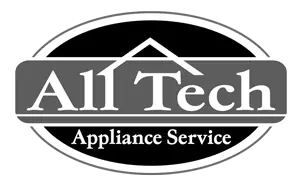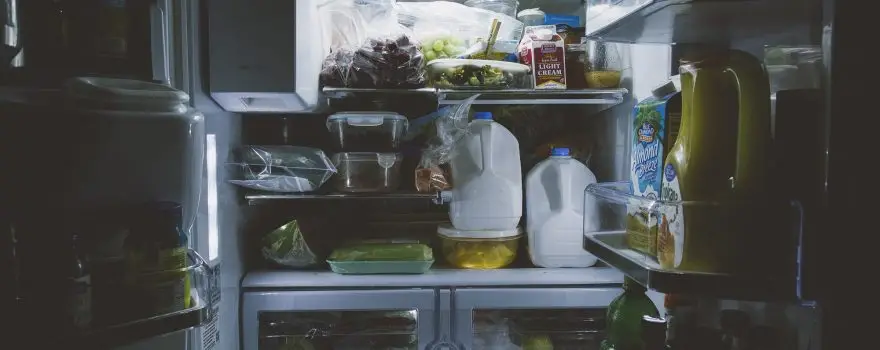Refrigerator Not Cooling? Here’s What To Check (And How To Fix It)
The average lifespan of a refrigerator is 17 years. Have you ever found your refrigerator not cooling? It’s a sad situation having one of your most essential appliances down. You are at risk of spoiling the food inside and eventually creating a mess in your house.
It’s, however, usual for home appliances to have problems. No panicking – you can fix it!
This guide enables you to recondition the fridge back on track. It discusses the critical parts to check and how to rectify them. There could be several things not working out in the right manner.
Wondering what to do next? Here are the steps to take when you encounter a faulty refrigerator.
1. Check the power Plug
Likely, the power plug is not functioning well enough as required. Electricity is what holds to every home appliance. Scrutinizing your power system should be a priority.
Before thinking of calling a technician, check whether the power system is working correctly. Without power supply, your fridge’s compressor can’t run. The effect of this? The food won’t stay cold.
A loose connection or a faulty socket might be the reason everything is abnormally warm. Fix the plug or power cable to avoid filling the garbage bin- and probably visit the grocer more often.
2. Adjust the Thermostat
Having a dysfunctional or out-of-position thermostat might be the reason your fridge isn’t working. It’s possible to interfere with the thermostat when cleaning or handling ingredients. Fixing the thermostat should be simple if it isn’t damaged.
Your thermostat could have been pumped by a higher than average temperature. Many refrigerator models have knobs used to raise or lower temperature. If the knob gets jolted, it could increase your refrigerator’s temperature, reducing the cooling effect.
All you have to do is to get back the thermostat settings to normal, and it will resume optimal performance.
3. Clearing the Inside Vents
The reason why your fridge has downtime is perhaps due to lack of proper air circulation. Air movement is vital in the refrigerator’s cooling process. Air should be flowing into the compartments and back to the compressor freely- anything short of that is a charade.
Find vents both in the freezer and refrigerator sections and remove anything that might be blocking them. There should be no foods blocking the vents way. Always try to make the vents clear for maximum cooling and optimal performance.
Clear the freezer-fridge vents to let in cooler air in the fridge section. If your refrigerator model has these vents, you can clear them to allow the flow of colder air.
4. Check the Mechanism Underneath
Forget about the insulation and storage part. The essential part of a fridge is the underneath system. This is the part that houses all vital components such as the fan, coil, and compressor.
These are the heart and backbone of your fridge, and without them, everything else is meaningless. If your refrigerator is not cooling as required, one of these parts may be dirty or out of position.
Clean the mechanisms beneath this appliance, and you might be on the right path. The underneath essential components are affected by dirt or dust, which hinders maximum performance.
When cleaning, turn off your fridge, clean every detail, and switch it on. You will probably notice a change. Always ensure it isn’t plugged to the power source to avoid electric shock.
Use a soft brush vacuum cleaner to get the grime out of the coils. Don’t use chemicals or hard materials that may damage the coils.
5. Inspect the Door Gaskets
Noticed the refrigerator not cooling? It might be due to leakage of cold air. The door gaskets help in containing the fresh air inside the fridge and preventing leakage.
However, it can happen the gaskets are not in the right position. This provides a way for air to disappear, denying your food the required cold hair supply. Inspect if the gaskets are correctly in place and whether or not they have dirt.
The rubber gasket can get warped, moldy, or dirty in such a way they can’t hold gas within the confines. Try cleaning the gasket with a bleach solution. If you notice any visible damage, consider replacing them.
6. Create More Space
Have you burdened your fridge with loads of foods? It’s not good to overfill your refrigerator with foods bearing because air circulation might be limited.
For optimal performance, about 2/3 of its space should be free. Overstressing the fridge downgrades its performance making it unsuitable for storing food. If this is the situation on your side, consider freeing up space.
7. Check the Door Switch
Is your refrigerator not cooling its content as it should? The problem might be on the door switch. Some refrigerators stop cooling when the door is open or when the switch is faulty.
When the door is open, most refrigerators stop active cooling. It’s after the door’s switch and been pushed down that it switches back to cooling mode. This is an automatic function, and a problem in the door switch may hinder cooling at all.
If you press the switch on the door and notice the light goes off, then it’s functioning suitably. Anything besides that means you have to fix the door switch.
Is Your Refrigerator Not Cooling Yet? It’s Time to Call a Technician!
If you try all the above DIY fixes and still not cooling, you should contact a technician. The above-aforementioned factors should be ruled out as the culprits, which means a more in-depth repair is required.
Look for someone experienced in handling refrigerators. It might be dysfunctional due to mechanical problems beyond your control.
If you need to repair home appliances, engage certified and licensed professionals. You might not have the technical know-how, ending up damaging what you could have saved.
Look for a technician when refrigerator not cooling, and it will be attended to. Don’t overstress over something that can be fixed within no time. Choose all-round technicians who can handle other home appliances as well.
Do you need help? Be sure to schedule an appointment with us today.


